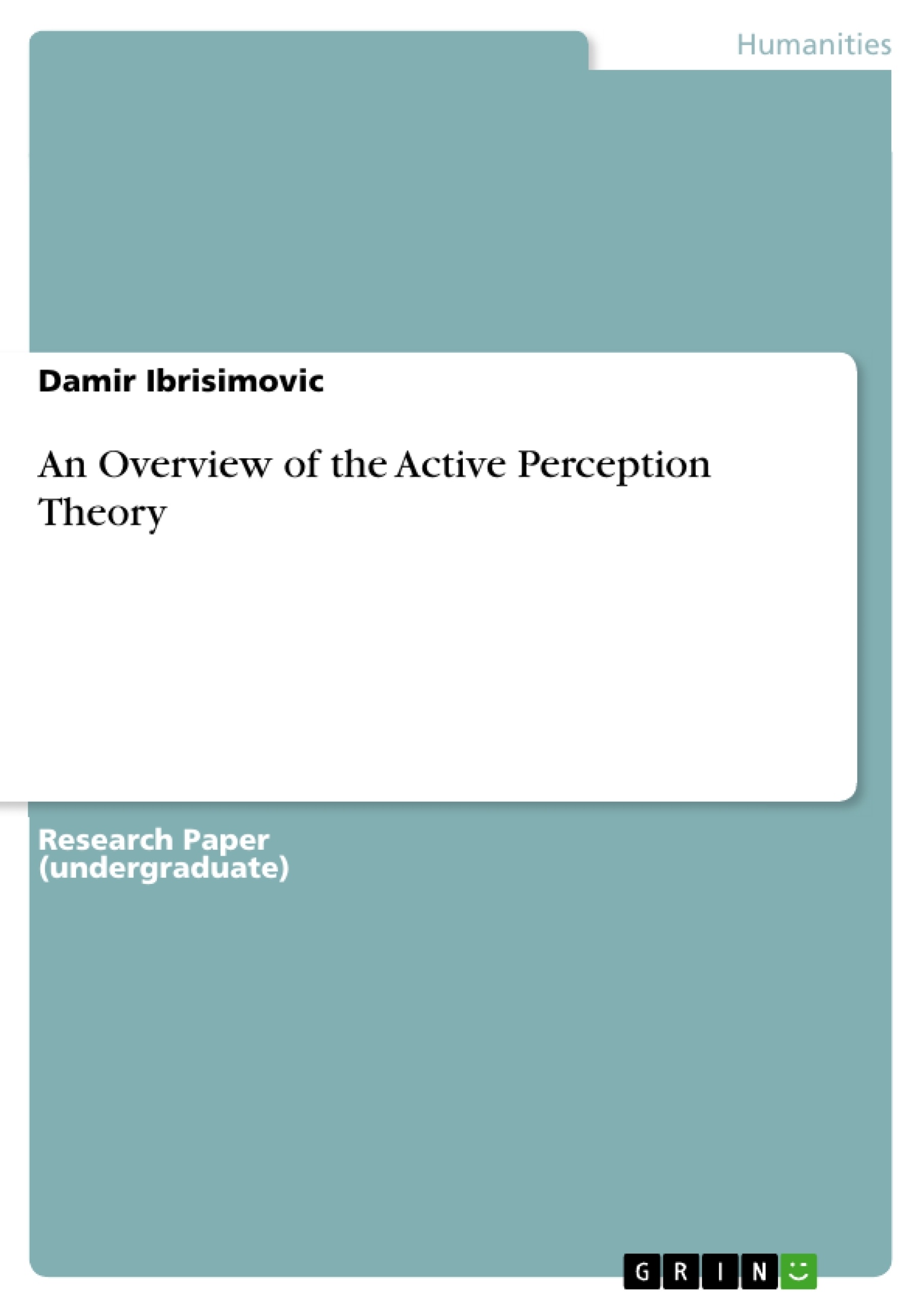The article offers a comprehensive overview of the Active Perception theory (PA); with the Complex Adaptive Systems theory in the background. It proposes that perceptual and motoric actions are essentially the same --- with the similar requirement for .8 seconds of neural activity --- until the perceptual or motoric act is carried out. In addition, the article identifies intent as a precursor to all perceptual or motoric actions.
The article relies on the latest evidence in neurology (neuroscience), cognitive psychology, genomics and anthropology. It also relates these finds to finds in Artificial Intelligence, especially neural networks.
Inhaltsverzeichnis (Table of Contents)
- Perception
- Introduction
- Support from Other Disciplines
- The Basic Tenets
- Consciousness
- Memory
- The Perception by Defaults
- Recognition vs. Cognition
- Free Will
- The Scales of the Lady Justice
- Non-monotonic Logic
- Kolmogorov's Complexity
- The Triangle of Perception
- The Genetics' Corner
- The Culture's Corner
- And Our Own Corner
- Early Development
- Social Aspects
- What Could Go Wrong
- Reality?
Zielsetzung und Themenschwerpunkte (Objectives and Key Themes)
This article provides an overview of the Active Perception Theory (PA), a contemporary theory of perception which asserts that individuals are active participants in their own perceptual experiences. The author, Damir Ibrišimović, explores the core tenets of PA and its implications for understanding consciousness, memory, and decision-making. Key themes covered in the text include: * **The active nature of perception:** This theme explores how individuals construct their own perceptions based on expectations, experiences, and prior knowledge. * **The role of consciousness in perception:** The author examines the limited capacity of consciousness and its relationship to non-conscious processes in shaping perceptions. * **The influence of memory and emotions on perception:** The article discusses the role of memory, emotional charges, and the formation of perceptual defaults in shaping our understanding of the world. * **The integration of insights from other disciplines:** The text highlights the contributions of cognitive psychology, genetics, sociology, anthropology, and artificial intelligence to the development of PA. * **The implications of PA for various aspects of human experience:** The author explores the impact of PA on our understanding of free will, decision-making, and the construction of reality.Zusammenfassung der Kapitel (Chapter Summaries)
Perception
This section introduces the Active Perception Theory (PA) as a dynamic interplay between the environment, our perception of it, and our description of it. It contrasts PA with the traditional, passive view of perception and draws upon the work of Richard L. Gregory to illustrate the active nature of perception. The author posits that PA is based on the idea that we form expectations and intentions based on prior experiences, which are then used to construct and interpret our current perceptions.Support from Other Disciplines
This section highlights the complementary support that PA has received from various disciplines, including genetics, sociology, anthropology, and artificial intelligence. The author notes the particularly surprising contribution of the theory of Complex Adaptive Systems, which shares striking similarities with PA, especially in the realm of neural networks.The Basic Tenets
This section elaborates on the core tenets of the Active Perception Theory. It emphasizes the importance of expectations and intentions in shaping our perceptions, highlighting the concept of "default percepts" and the role of mental maps in guiding our experiences. The author uses the analogy of virtual reality simulations to explain how we build up specific expectations before engaging with our surroundings, which can lead to perceptual failures if those expectations are not met.Consciousness
This chapter delves into the nature of consciousness within the framework of the Active Perception Theory. It describes consciousness as a spotlight focusing on a limited number of symbols, emphasizing its limited capacity and the role of non-conscious processes in shaping our experiences.Memory
This section explores the relationship between memory and perception within PA. It emphasizes the role of emotional charges in shaping our memories and the processes involved in transforming short-term memories into long-term memories through constant repetition and verification.Schlüsselwörter (Keywords)
This article focuses on the Active Perception Theory (PA) and its implications for understanding perception, consciousness, memory, and decision-making. Key terms include: active perception, passive perception, expectations, intentions, default percepts, mental maps, virtual reality simulations, consciousness, non-consciousness, phenomenal consciousness, memory, emotional charges, perceptual defaults, Complex Adaptive Systems, neural networks.
Fin de l'extrait de 17 pages
- haut de page
- Citation du texte
- Damir Ibrisimovic (Auteur), 2010, An Overview of the Active Perception Theory, Munich, GRIN Verlag, https://www.grin.com/document/190057
Lire l'ebook



